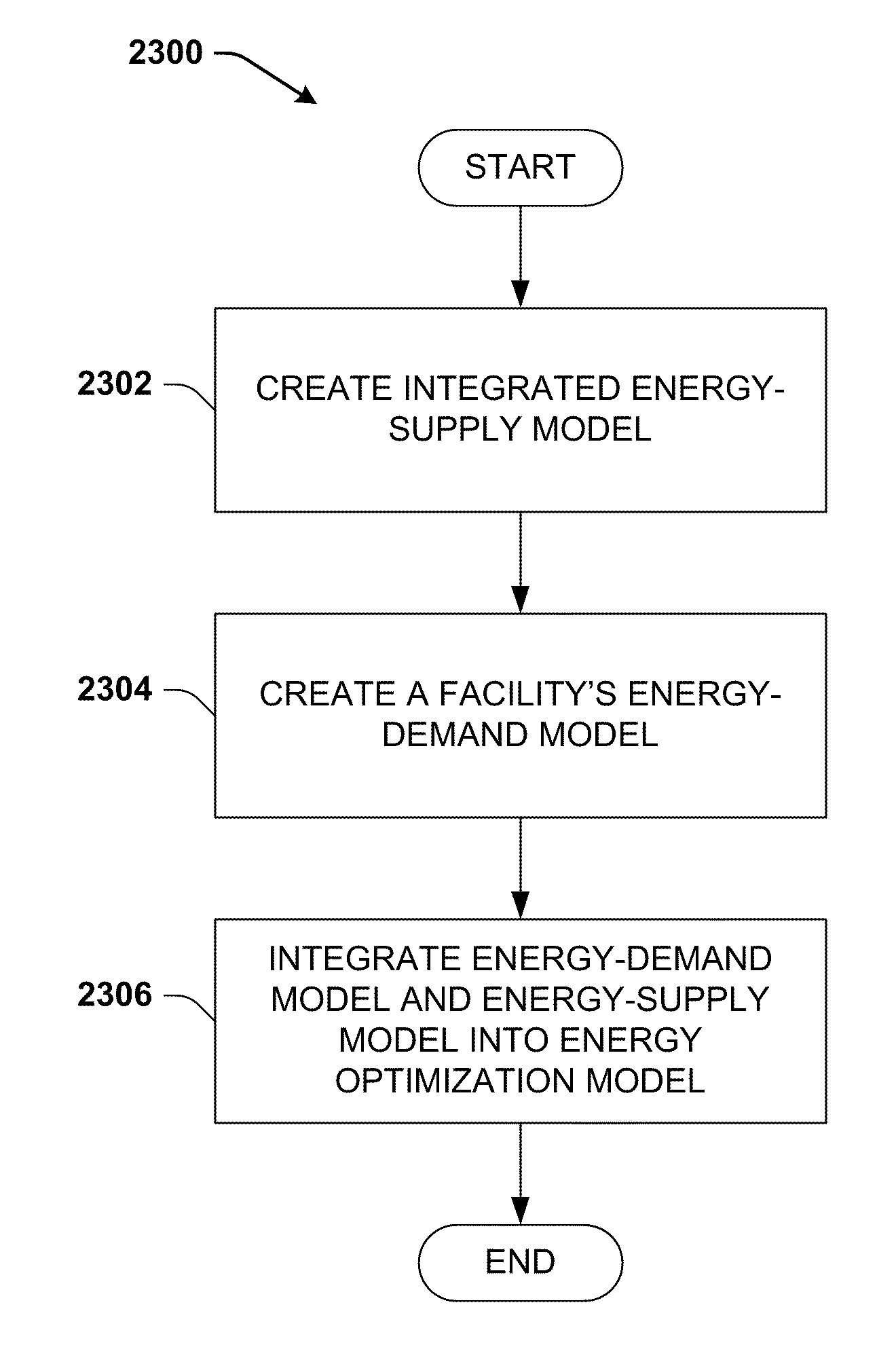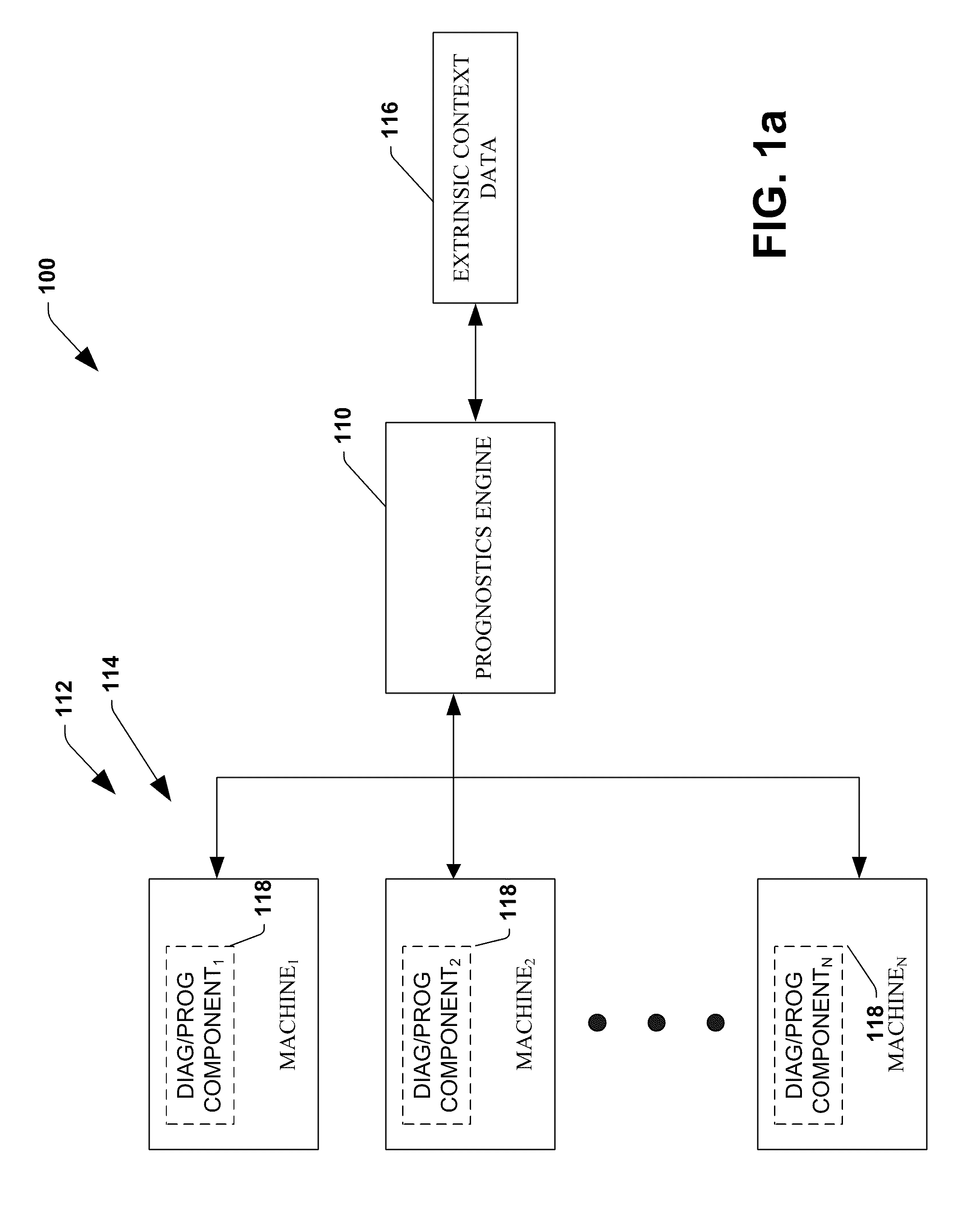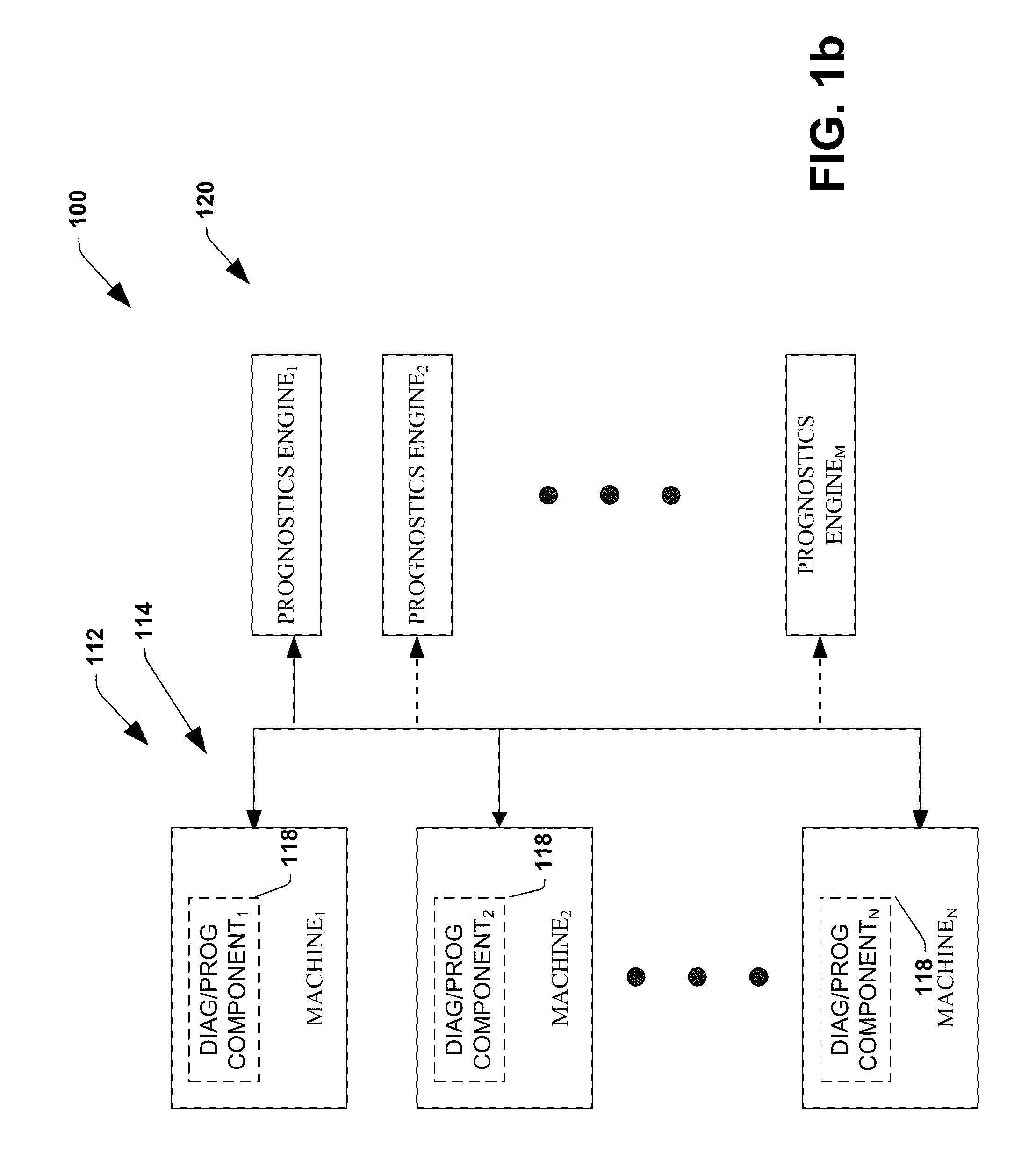[0012]Systems, networks, processes, machines, computers . . . employing the subject invention can be made to operate with improved efficiency, less down-time, and / or extended life, and / or greater reliability, as well enhancing systems / processes that are a superset thereof. Diagnostics and / or
prognostics in accordance with the invention can be effected dynamically as well as in situ with respect to various operations / processes. Moreover, the invention provides for optimizing utilization of diagnostic / prognostic schemes via employment of a utility-based approach that factors cost associated with taking an action (including an
incorrect action or no action) with benefits associated with the action (or of inaction). Moreover, for example, such action can relate to
dissemination of the diagnostic / prognostic data and / or an action taken in connection with an analysis of the data. The data
dissemination can be effected via
polling techniques, beaconing techniques,
heartbeat schemes, broadcast schemes, watchdog schemes, blackboard schemes, and / or a combination thereof. Accordingly, state information can be employed in order to determine which scheme or combination or order would lead to greatest utility in connection with desired goal(s).
[0017]In accordance with another aspect of the invention, an
intelligent agent scheme can be employed wherein various machines, physical entities,
software entities, can be modeled and represented by intelligent
software agents that serve as proxies for the respective machines or entities. These agents can be designed to interact with one another and facilitate converging on various modifications and control of the machines of entities in connection with efficiently optimizing an overall business concern. Lower level agents can collaborate and negotiate to achieve lower level process objectives in an optimal manner and integrate this information to higher level agents. Agents, can compete with each other for
limited resources and become antagonistic in order to realize critical objectives in a save, reliable, and optimum manner. Moreover, the agents can comprise a highly distributed system controlling the operation of a complex dynamic process. There may not exist a central point or control or coordination of the system. Rather information is distributed among the various agents. Groups of agents can form clusters to promote meeting operational objectives such as
local agent goals as well as to promote
collaboration in meeting higher-level system goals and objectives. During negotiation for services and functions, local agents can also provide “cost” information to other agents indicating efficiency, energy utilization, or robustness for example. Agents can assign functions and control
modes to particular agents based on a comparison and optimization of the specified cost function or operational objective or objectives to be optimized.
[0018]Moreover, it is to be appreciated the subject invention can be employed in connection with initial specification,
layout and design of an industrial
automation system (e.g., process, factory) such that high-level
business objectives (e.g., expected revenue, overhead,
throughput, growth) are considered in connection with predicted
machine characteristics (e.g., life cycle cost, maintenance,
downtime, health, efficiency, operating costs) so as to converge on specifications,
layout, and design of the industrial
automation system so that a mapping to the high-level
business objectives is more closely met as compared to conventional schemes where such
layout and design is performed in more or less an ad hoc, manual and arbitrary manner. Integrating information regarding opportunities for real-time
prognostics and optimizing control can influence the initial design and configuration of the system to provide additional
degrees of freedom and enhance the capability for subsequent
prognostics and optimizing and compensating control.
[0022]Where the motorized system includes an
electric motor operatively coupled with a pump and a
motor drive providing electrical power to the motor, the performance characteristics may include efficiencies or other
metrics related to the motor, the pump, and / or the
motor drive. The selection of the desired
operating point may comprise correlating one or more of
motor efficiency information, pump efficiency information, and motor drive efficiency information in order to derive correlated system efficiency information. The desired
operating point can then be selected as the optimum efficiency point within the allowable range of operation according to the correlated system efficiency information. The efficiency of the individual component devices, and hence of the pumping system, may be associated with the cost of electrical energy or power provided to the system. Consequently, the invention can be employed to control the pumping system so as to minimize power consumed by the system, within tolerance(s) of the allowable range about the process
setpoint.
[0027]Thus, for example,
signal processing may be performed in order to ascertain wear, failure, remaining useful lifetime, or other deleterious effects on system performance, whereby the control of the system may be modified in order to prevent further degradation, extend the remaining service life of one or more system components, or to prevent unnecessary stress to other system components. In this regard, the diagnostic component may process signals related to flow, pressure, current,
noise, vibration, and temperature associated with the motorized system. The altered system control may extend the life of the machinery to maximize
throughput while insuring there is not failure for a specified period of time and not longer. Having the machinery live longer than the minimum necessary will require operating the machinery at an even lower level of efficiency. For example our objective may be to maximize
throughput or efficiency while just meeting the minimum required lifetime and not longer.
 Login to View More
Login to View More  Login to View More
Login to View More 


